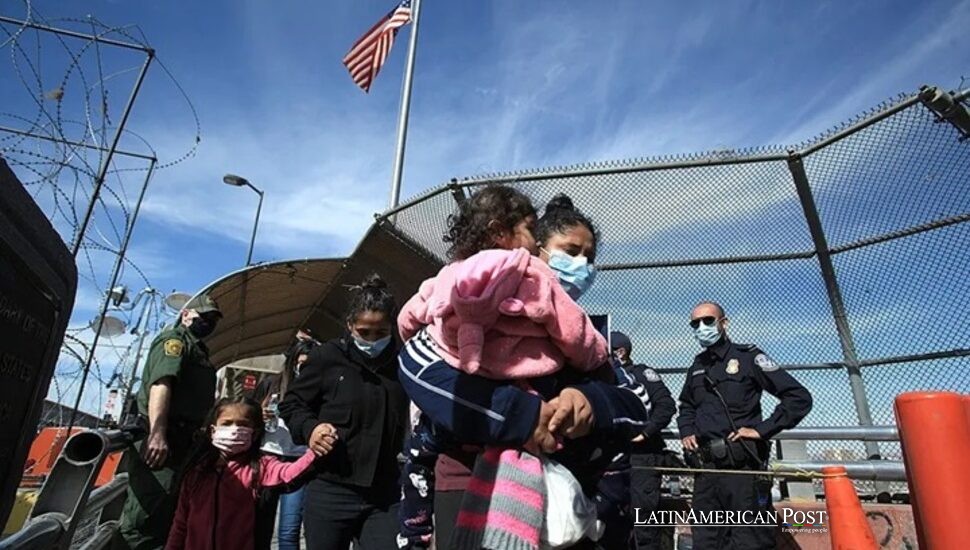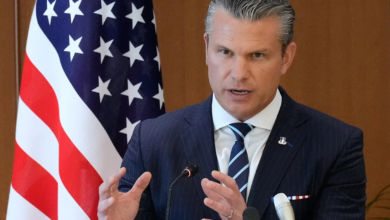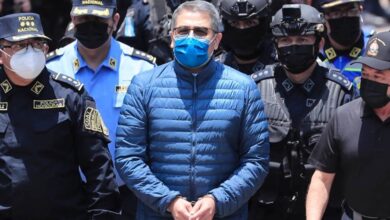Why Latin Americans Grapple to Understand Complex U.S. Immigration Enforcement

Around the United States, efforts to advance mass deportations raise questions for Latin Americans seeking to understand how local law enforcement shapes federal ambitions. The American political system includes decentralized police forces that follow different rules about immigration enforcement. This creates a mixed pattern of local regulations immigrants must navigate and distinct experiences in each community.
A Fragmented Police Structure That Complicates Enforcement
One reason mass deportations in the United States seldom unfold uniformly is the sheer variety in how American policing is organized. Over 18,000 individual law enforcement agencies operate at state, county, and municipal levels, each reflecting local politics, traditions, and funding constraints. While federal agencies like Immigration and Customs Enforcement (ICE) can issue broad directives, local departments choose whether to participate.
The relationship between local police and ICE varies across regions. Some municipalities let federal agents check jail inmates’ immigration documents and arrange custody transfers. Leaders report that cooperation helps remove undocumented criminals and adds safety for residents. But despite local officials’ support, money shortages or space limitations in jails truly restrict assistance levels.
Large urban centers take another position. The policies in these municipalities align with sanctuary rules. A police officer lacks permission to ask about immigration status or hold people solely on ICE requests without court documentation. Local law enforcement maintains that such rules create trust between police and immigrant communities. However, as some sheriffs told NPR, it also means that ICE must commit more resources to find and arrest individuals who want to be removed outside the controlled setting of jails.
To understand these divergences, Latin Americans watching from afar should know that no single national police force handles everyday law enforcement in the U.S. Local agencies abide by state laws and local mandates, often guided by the political mood of their regions. So even if the federal government calls for sweeping raids, authorities in different corners of the country might or might not follow through.
How Budgets and Politics Limit ICE’s Reach
Though ICE’s federal mission is to detain and deport individuals lacking legal status, the agency lacks a massive staff or unlimited detention space. It depends on local partners to pinpoint targets and hold them until ICE can process paperwork for removal. Without that cooperation, ICE is forced to conduct time-intensive street operations, relying on intelligence, door-knocking, or workplace raids— a logistical nightmare if local officers are not on board.
The rules for detaining immigrants present significant hurdles. ICE sets strict requirements for county jails that wish to hold immigrant detainees. These standards affect all aspects—from meal quality to complaint systems. Local leaders and community groups often view such demands as excessive or ethically wrong. Some facilities thus end their previous contracts, forcing ICE to search urgently for alternative detention spaces. For others, ICE’s bed rent payments may not justify the staff hours needed to meet the agency’s inspections.
While some localities remain eager to sign new contracts or expand existing ones, it is not guaranteed. In a discussion reported by NPR, local officers often said they focus on crime-fighting, not immigration paperwork. They see a potential drain on resources if their personnel spend weeks on federal tasks. Others object on principle, fearing that more detainees mean more responsibilities for jails not designed to hold large immigration populations. Ultimately, unless the U.S. Congress provides additional funding for ICE or local police, mass deportation aims run up against the finite capacity of jails.
Public officials in conservative areas occasionally champion providing grants for agencies that join 287(g), a formal program empowering local officers to enforce immigration law. Yet even these solutions do not override the fundamental complexities. Some local leaders note that broad support for immigration enforcement may exist, but not to the extent of paying for new staff or expanding detention blocks. The interplay of finances, community priorities, and electoral concerns shape a county’s choice to help ICE.
Sanctuary Cities And Changing Realities
A significant factor complicating deportation sweeps is the “sanctuary” movement, in which municipalities or counties limit cooperation with federal immigration authorities. Officials in these places argue that when local police align too closely with deportation operations, trust between law enforcement and immigrants erodes—leading witnesses or victims to avoid contacting police for fear of being turned over to ICE. Localities hope to keep their community members from living in the shadows by enacting sanctuary policies.
This approach has ramifications for federal immigration enforcement. Suppose someone in a sanctuary city is arrested on minor charges. In that case, local officers might release them upon posting bail or finishing their sentence, refusing to honor ICE “detainers” unless a judge issues a warrant. ICE is then left with the more resource-heavy option of tracking down the individual on its own. For Latin Americans in these places, the presence of sanctuary policies can mean a significantly different daily reality than in counties with explicit ICE collaboration.
Some states have codified into law the constraints on local collaboration, effectively banning jails from acting as extended arms of ICE. On the other hand, states with legislatures or governors more supportive of federal immigration enforcement might attempt to penalize counties that adopt sanctuary rules. The result is a seemingly contradictory map: a county might vigorously assist ICE while a neighboring county refuses. For Latin American immigrants trying to gauge their risk, that patchwork fosters confusion and anxiety.
A parallel concern for ICE is the capacity to hold detainees if thousands more are apprehended. The agency often seeks extra bed space in local jails or private facilities. However, complaints about conditions within these centers have led to calls for stricter oversight— or, as ICE indicated, possibly relaxed standards if local or state jails are deemed good enough for all detainees. The question is whether any guideline shift could spark controversies over humane treatment. The deeper the tension, the more friction between ICE’s operational needs and local politics.
Understanding The Nuances For Latin Americans
For people from Latin America who study U.S. immigration rules, a basic fact stands out: deportation doesn’t just happen because the White House or ICE gives an order. Local police departments make accurate decisions based on their money, state regulations, and leaders, along with community pressure. In some areas, officers are placed next to ICE teams to find residents without documents. However, other districts reject all participation, forcing federal agents to work alone. The result creates different situations for undocumented individuals: one area pushes hard to arrest them while another looks the other way.
Latin American consulates, migrant advocacy groups, and the migrants themselves must remain vigilant about where they reside or travel. People who do not hold valid documentation would face starkly different risks simply by crossing from one country to another. This underscores how the U.S. approach stands apart from the more centralized models in many Latin American nations, where federal mandates govern every local police force. In America, policing is complex, multi-layered, and frequently shaped by local voices.
Ultimately, the push for sweeping deportation in the U.S. is neither straightforward nor unstoppable. Structural checks—from elected sheriffs to funding shortfalls—limit the scale or speed at which ICE can remove people. For Latino communities and immigrants from across the Americas, appreciating these checks is critical. The U.S. policing system differs from methods in Latin American countries, where national rules control all departments. American law enforcement operates through separate city, county, and state agencies. Local communities shape police practices along with department policies.
Also Read: Mexican Cartel Kingpin Takedowns Create More Chaos Than Stability
Though federal officials may frame new initiatives with bold claims, they face a reality where local autonomy holds heavy sway. The White House might designate certain groups as a priority for removal, but in a metropolis that rejects ICE’s reach, that plan stalls. Conversely, a conservative county might extend detention to even minor offenders. Thus, as Latin Americans keep watch on U.S. policy debates, the most crucial insight is that local policing in the States is far from monolithic, leaving a patchwork of cooperation—and refusal—that shapes the fate of millions.





